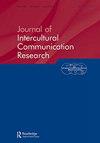Cultural Semiospheres in Contact in Foreign Language Teaching
Q1 Social Sciences
Journal of Intercultural Communication Research
Pub Date : 2021-03-09
DOI:10.1080/17475759.2021.1893208
引用次数: 0
Abstract
ABSTRACT This paper probes into the many facets of Europe, through the course book ‘English for General High School 2’ and attempts to answer to questions such as, which is Europe’s identity today? How do the texts deal with the influx of illegal immigrants from the east, human rights, and the phenomenon of xenophobia? What cultural aspects of Europe are depicted in the books? How is the ‘post-crisis Europe’ depicted in the coursebook? We focus on the coursebook which is used in the third class of Greek senior high school, as this grade level is considered to be a very important language level, especially in English as a foreign language. At this language level and grade students are on the verge of graduating from senior high school and are moving on to either further their studies in tertiary education or are preparing to find a job. The study of the aforementioned coursebook yields two basic semiotic conclusions. The first is that a selection of signs have been made which obey the principles of binary opposition. The second is that students in Greece will learn aspects of the American culture, a lot better, if exposed to them through a coursebook - even if that is an English as a foreign language coursebook.外语教学中的文化交际
摘要本文通过《普通高中英语2》一书探讨了欧洲的多个方面,并试图回答以下问题:当今欧洲的身份是什么?这些文本如何处理来自东方的非法移民涌入、人权和仇外心理现象?书中描绘了欧洲的哪些文化方面?“后危机时期的欧洲”在教材中是如何描述的?我们关注希腊高中三年级使用的教材,因为这个年级被认为是一个非常重要的语言水平,尤其是在英语作为外语方面。在这个语言水平和年级的学生即将从高中毕业,他们要么继续接受高等教育,要么准备找工作。对上述教材的研究得出了两个基本的符号学结论。第一个是选择了一些符号,这些符号遵循二元对立的原则。第二,如果希腊的学生通过一本教材接触到美国文化的各个方面,即使这是一本英语作为外语的教材,他们也会更好地学习美国文化。
本文章由计算机程序翻译,如有差异,请以英文原文为准。
求助全文
约1分钟内获得全文
求助全文
来源期刊

Journal of Intercultural Communication Research
Social Sciences-Cultural Studies
CiteScore
2.00
自引率
0.00%
发文量
20
 求助内容:
求助内容: 应助结果提醒方式:
应助结果提醒方式:


